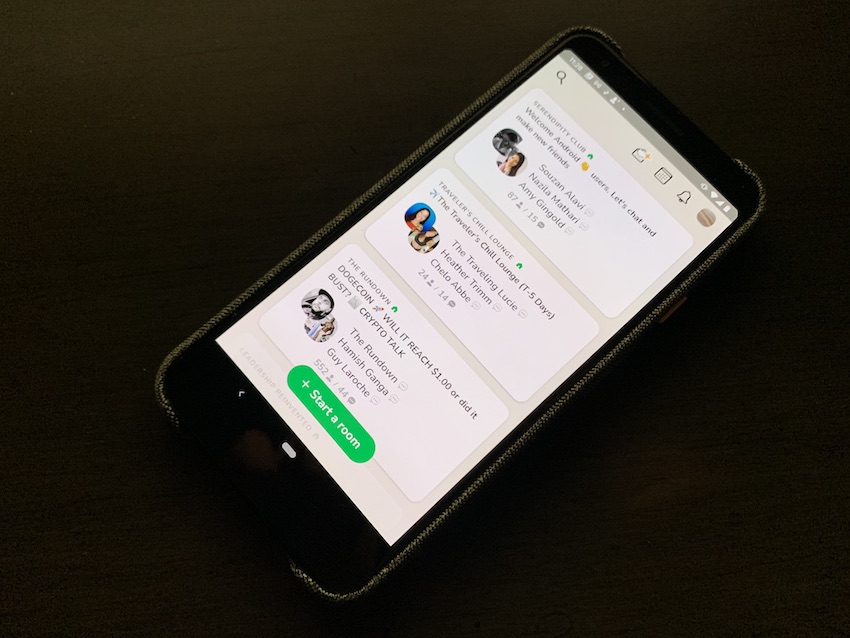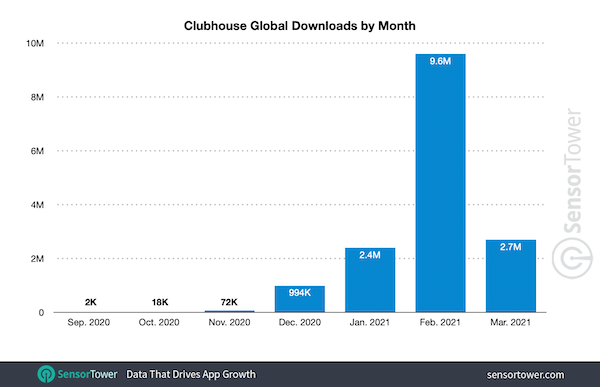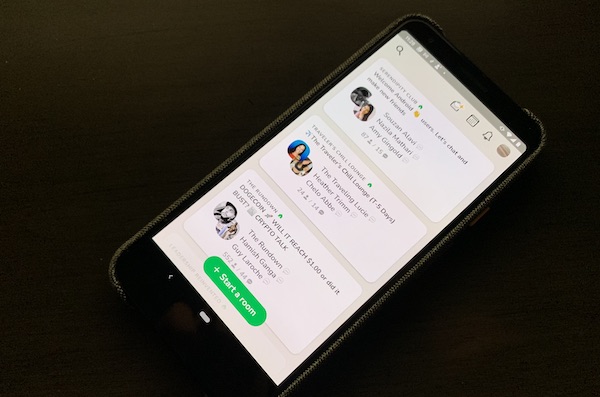Clubhouse Launches on Android and New Features Arrive in iOS App as Downloads Decline

Clubhouse received a needed boost today as it opened up to Android smartphone users for the first time. The app may not have invented what we now know as social audio, but it has popularized the segment among early tech adopters and is responsible for much of the current design trends. Nearly every other social audio app has included many of Clubhouse’s user interface design elements.
The iOS exclusivity certainly constrained growth even as many longtime Android users picked up iPhones and iPads just to get Clubhouse access. That constraint is now out of the way and should make Clubhouse much more suitable for many types of conversations. It has been disappointing, for example, that so many of the great discussions we have had in the Conversational AI Club have been limited to iOS users thus far.
We have published a number of those events as podcasts primarily so Android users could get access to the insights provided by the guests even though they were shut out of joining the virtual rooms live and asking questions or adding their comments to the discussions. If you are in the voice AI or chatbot industry, have an Android smartphone and would like an invite, you should be able to use this link to skip the waiting line and RSVP for our next event on Monday. We will be glad to have you join us.
The Rise and Fall, and Maybe Rise in Popularity
The pioneering social audio app has experienced rapid growth in 2021. It entered the year with just about 1 million total users. That figure shot up to over two million monthly active users (MAU) just a few weeks later and over 10 million MAUs in February. This was driven by a loosening of the tight controls over invites for new users and quick expansion into several countries in Europe and Asia. That dramatic growth contributed to Clubhouse closing new funding at a $4 billion valuation in April, a sharp increase over its $1 billion valuation three months earlier.
However, the growth rate declined as quickly as it arrived. Sensor Tower reported last month that Clubhouse downloads peaked at 9.6 million in February and then fell to just 2.7 million in March. That was followed by just 900,000 in April. That makes for a pretty clean bell curve for December to April.

The introduction of the Android App should bring those numbers back up again. Granted, there is now much more competition. Twitter Spaces has been growing in popularity. We also expect to soon see an update to Spotify’s Locker Room with new branding at Green Room. Reddit is in beta with a group of subreddit moderators, and Discord is becoming increasingly popular for Clubhouse-style rooms using its Stages feature.
Clubhouse’s current challenge is less about downloads than the new competition and one other growing problem in lower user frequency of use. Many of the new users in February haven’t shown the same type of retention and use frequency as the December and January cohorts. That led to noticeably smaller room sizes in April. This may be a natural cycle as new people try out the app, and only some stick around. The rapid swelling of user numbers in February may have simply inflated numbers for that month and into early March before settling back to a more sustainable level. With that said, many of the most active room hosts on the app have openly expressed frustration with dwindling audience numbers.
New iOS Features and an Android Client Behind the Times
The new Android users will have access to the app but not all of the features that iOS users have today. For example, one of the latest iOS features shows in a user’s profile the next room they are scheduled to co-host. This “Up next” for scheduled events also shows up in club listings. Neither is available for Android. Clubhouse power user Brian Fanzo offered a few more notes on the differences in some Twitter posts this evening.
Android #Clubhouse additional notes;
– PTR: works differently as you don't see the icons move.
– No name of the Club when in a room
– Can't move people from follower to member of a club
– App icon on desktop shows the notifications number— Fanzo 🧢 $ADHD (@iSocialFanz) May 10, 2021
A blog post by the Clubhouse co-founders Paul Davison and Rohan Seth today commented, “Our plan over the next few weeks is to collect feedback from the community, fix any issues we see and work to add a few final features like payments and club creation before rolling it out more broadly.” So, this lack of a full-featured Clubhouse app seems to be acknowledged, but after an extended test period, users can expect feature expansion. It is only available today in the U.S. and will then expand to other English-speaking countries first before wider distribution.
What this Means for Social Audio
Bringing Android into the Clubhouse user base was critical. You could argue that it is two months too late as a lot of the surge in enthusiasm has subsided. However, Clubhouse could not have absorbed so many new users from the Android community two months ago while also supporting the surge in iOS users from around the world. It was struggling to build out its back-end services just to keep audio flowing in all the rooms being run simultaneously. App issues are fairly common with Clubhouse, but there was a period of a couple of weeks where it was clear the production systems were overloaded during certain hours of the day.
What we have now is the Clubhouse as the most prominent pure-play social audio app competing with platform players that offer similar features as a complement to their core product. Twitter, Discord, and Telegram are the furthest along from a product standpoint though the value offered is different in each case. Facebook, Spotify, and Reddit are close behind, and Instagram has expanded an existing feature with some social audio type features. LinkedIn has announced the intention to include social audio but has not offered much in the way of details. The near future will clearly be driven by experimentation by both social audio providers and users, along with inevitable audience fragmentation.
Follow @bretkinsella Follow @voicebotai
Facebook Lays Out Ambitious Social Audio Plans to Compete With Clubhouse and Twitter
Spotify Renames Social Audio Acquisition Locker Room to Spotify Greenroom









